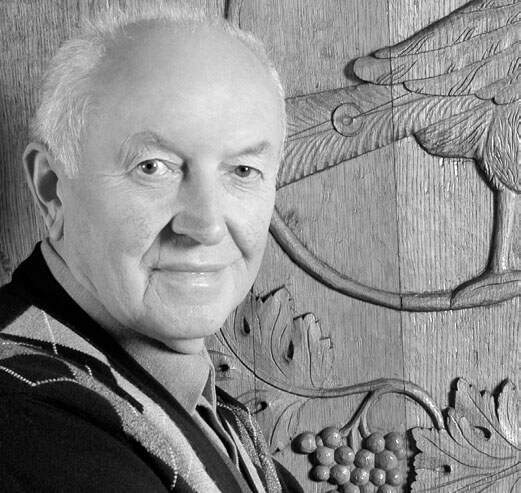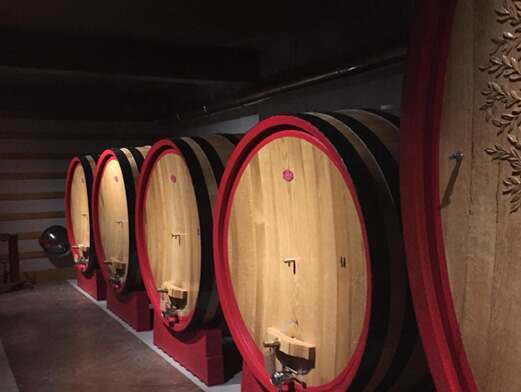GIUSEPPE QUINTARELLI: 2023 RELEASES
UNITED KINGDOM PRIVATE CUSTOMER EXCLUSIVITY
INTRODUCTION
“I recommend anyone who has yet to taste a Quintarelli wine does their best to do so.” Jancis Robinson

This year marks a decade since Team C&B first visited Quintarelli, in the company of the late Gianfranco Soldera, who kindly introduced us and whose wines we continue to represent in Asia.
We have been Quintarelli’s exclusive UK agent for private customers for seven years now. This great family estate, a legend of Valpolicella, is run by Francesco Grigoli, grandson of the great Giuseppe ‘Bepi’ Quintarelli, who died in 2012.
These wines, which are now rightly recognised as classics, are unique to their origin and their largely indigenous grape varieties. Wines with a sense of place – that place being the beautiful Negrar valley, some 20 minutes to the north of Verona.
There is a range of vintages in this offer due to the various ageing periods of the different styles. The wines are in stock, so although there is plenty of scope for further ageing here, we can also arrange immediate delivery.
As always, quantities are very limited here so do let us know what you would like as soon as you can.
GUY SEDDON,
HEAD OF FINE WINE BUYING
AUGUST 2023
HISTORY
Tradition, with a twist
Founded in 1924, the cantina was taken over by the 22-year-old Giuseppe Quintarelli in 1950. The learning curve must have been steep for a young man, but he rapidly became the reference point for Valpolicella, both in Italy and abroad.
At once conservative and experimental, Giuseppe introduced non-native grape varieties to the estate. Alongside his traditional Amarone Classico is ‘Alzero’, his unique Amarone-style blend of Cabernet Sauvignon, Cabernet Franc and Merlot. Similarly, the estate’s Valpolicella Classico Superiore sits beside ‘Primofiore’, a half-native, half-Cabernet blend. Giuseppe also produced small quantities of a white wine, ‘Bianco Secco’, using Garganega and a rare local grape called Saorin.
Following Giuseppe’s death in 2012, the two successive generations have taken over. At the forefront is Giuseppe’s elder grandson, Francesco Grigoli, aided by his enologist brother Lorenzo and their parents Fiorenza (Giuseppe’s daughter) and Gianpaolo.
The estate’s longstanding consultant winemaker, Roberto Ferrarini, died in 2014, just two years after his employer and close friend. The winemaking is now carried out by a group of his disciples – the word is apt, such is the reverence for both Ferrarini and Quintarelli here.

THE ESTATE

Quintarelli has 11 hectares of vines, whose average age is around 30 years. Soils are limestone and basalt. Black grapes include Corvina, Corvinone, Rondinella and Croatina, alongside Merlot and Cabernets Sauvignon and Franc, with small amounts of Nebbiolo and Sangiovese. The whites are Garganega, Trebbiano Toscano, Sauvignon Bianco, Chardonnay and Saorin.
At the end of a secluded driveway is a terrace with breath-taking views of the valley and the pre-Alpine Lissini Mountains. The estate buildings contain subterranean cellars, offices and a laboratory/labelling area on the ground floor, with the grape drying rooms above.
The ‘valley of many cellars’ (val-poli-cella) is north of Verona and east of Lake Garda. On a clear day, the snow-capped peaks of the Alps are visible. The region’s three main valleys are the Fumane, the Marano and the Negrare. Quintarelli is in the latter, in the commune of Negrar, the name of which is thought to derive from the Arusnates, who inhabited the region in Roman times. This heritage is celebrated at Quintarelli in the carved fascias of their beautiful Slavonian oak botti (vats).
Created in 1968, the Valpolicella Denominazione di Origine Controllata (DOC) covers some three and a half thousand hectares, with the theoretically superior Valpolicella Classico DOC extending to almost the same area. In this most permissive of regulatory contexts, producer is everything: there are Valpolicellas and Valpolicellas…
Traditional pergola trellising prevails in Valpolicella. Vines are trained high from the ground into long tunnel-like structures, inside which the grapes dangle from shady ceilings of foliage. This intricate system requires an elaborate supporting framework. Although lush with foliage in summer, in winter these trellising structures give the eerie appearance of rows and rows of crucifixes.
The aim is to have eight to ten bunches per vine. Picking is late, usually culminating in the first two weeks of October. A well-aerated canopy is crucial to avoid botrytis. Multiple passes through the vineyards are made. The first selection is of the best, ripest grapes, destined for the Amarone and Alzero. The berries from the second pass will become Valpolicella. The third is for grapes which will be used for the fresh young wines.
Average yields are around 8,000 kilograms of grapes per hectare, with the resulting volume of wine varying with the degree of raisining.
THE WINES

All of the grapes destined for the Amarone styles (including Alzero), and some of those which will become Valpolicella, are dried on straw matting in the upper part of the cantina. This process is known as appassimento, which sounds complicated, but just means raisining of grapes after picking (an uva passa being a raisin). This concentrates the sugars and flavours.
In addition, the ripasso technique is used in the Valpolicella Classico Superiore. This is another Valpolicella speciality, in which freshly fermented wine is ‘re-passed’ over unpressed Amarone skins. This kick-starts a second fermentation which bolsters the body of the resulting wine, as well as imparting some raisined character and raising the alcohol content (although only marginally, by around 1% at Quintarelli).
Ageing takes place in Slavonian oak botti, for varying periods. The Amarone and Alzero spend some seven years in oak. Production is tiny: an average of 5,000 cases of 12 bottles are produced per year. The labels were previously handwritten, a tradition which has been enshrined in the cantina’s instantly recognisable jagged-edged labels.
BIANCO SECCO 2021
The only Quintarelli white is 80% Garganega, with Trebbiano Toscano, Sauvignon Bianco, Chardonnay and Saorin. There is a little more Sauvignon character in the Bianco Secco this year, which expresses itself as a herby grassiness, rounded out with cedary spices and a core of concentrated stone-fruit, from the small (less than 1%) proportion of dried passito grapes. 10-15% is aged in old 20 hectolitre botti, further rounding out the texture. A refreshing 12.5% abv, as usual.
Corney & Barrow Score 16.5 - 17
Recommended drinking from 2023–2026
£90/CASE OF 1 MAGNUM, IN BOND UK
PRIMOFIORE 2020
Literally “first flower”, Primofiore is 50% Corvina and Corvinone, 50% Cabernet (Sauvignon and Franc). The Cabernet grapes are dried on straw matting for two months, whilst the Corvina and Corvinone are fermented without raisining. Aged for two years in large old Slavonian oak botti. Dried herbs, blood orange and tobacco leaf. Red cherry and blackberry fruit aromas, accompanied by bitter chocolate and dark sweet spices. Supple tannins balance out the medium body and juicy acidity. 14% abv.
Corney & Barrow Score 17.5
Recommended drinking from 2023–2028
£120/CASE OF 1 MAGNUM, IN BOND UK
VALPOLICELLA CLASSICO SUPERIORE 2015
55% Corvina and Corvinone, 30% Rondinella and 15% Cabernet Sauvignon, Nebbiolo, Croatina and Sangiovese. Half dried grapes, with half of the fermenting wine passed over Amarone skins, the traditional ripasso method, bolstering both body and raisined complexity. The 2015 Valpolicella is a wine of great purity and impressive substance – a red-berried charmer, with dried herb spices persisting on the finish. This wine accounts for around a third of the estate’s production. It spends at least six years in Slavonian oak botti. 15% abv.
Corney & Barrow Score 17.5
Recommended drinking from 2024–2030
£215/CASE OF 1 MAGNUM, IN BOND UK
ROSSO CÀ DEL MERLO 2015
Cà del Merlo, made since 1980, means house of the blackbird and refers to the vineyard site. 55% Corvina and Corvinone, 15% Rondinella, 10% Cabernet (Sauvignon and Franc), 15% Merlot and 5% Nebbiolo, Croatina and Sangiovese. Although the winemaking is the same as for the Valpolicella Classico Superiore, 15% Merlot introduces a red-fruited fleshiness, making for a fresher, fruitier, more overt wine than the Valpolicella, which should also be approachable a little sooner. 15% abv.
Corney & Barrow Score 17 - 17.5
Recommended drinking from 2023–2030
ROSSO DEL BEPI 2014
Rosso del Bepi is made in vintages falling just short of an Amarone but which warrant a separate wine. Something of a rarity – the previous vintages were 2010, 2008 and 2005. The berries received four months’ drying and eight years’ maturation in Slavonian oak botti. In addition, the ripasso method is used here, re-passing and re-fermenting the wine on the recently-pressed skins of an older Amarone. An intense nose of blackberries, bitter cherries and liquorice. The palate is racy – quite lean for a Rosso del Bepi/Amarone – with real verve and momentum. Fine, fruit-coated tannins bring substance to an arc of airy freshness, making for a long and perfumed finish. 15.5% abv.
Corney & Barrow Score 17.5+
Recommended drinking from 2023–2030
£285/CASE OF 1 MAGNUM, IN BOND UK
AMARONE DELLA VALPOLICELLA CLASSICO 2015
Is Amarone the most quintessential Italian wine? Mouth-watering cherries meet leathery spices... 55% Corvina and Corvinone, 30% Rondinella, with the remaining 15% made up of Cabernet, Nebbiolo, Croatina and Sangiovese. Intense aromas of red and bitter cherries, blood orange and tangerine rind, with bitter chocolate and dried spices behind. The palate is similarly intense, driving and yet so refined, combining fruit sweetness with a resolutely savoury line of tobacco and strawberry leaf. Fine, linear tannins frame the fresh, focused finish. Francesco Grigoli said this reminds him of the 2012 and 2000 vintages. 16.5% abv. Seven years in old oak botti.
Corney & Barrow Score 18.5
Recommended drinking from 2023–2040
AMARONE DELLA VALPOLICELLA CLASSICO RISERVA 2011
The Riserva is made only three times a decade on average. The grape blend is identical to the Classico bottling, but the Riserva is given an additional two years’ ageing in botti, making a total of nine years in oak. Again, therefore, we have 55% Corvina and Corvinone, 30% Rondinella, with 15% made up of Cabernet, Nebbiolo, Croatina and Sangiovese. Not tasted, as per tradition here – I bet it’s good though!
Corney & Barrow Score 18.5
Estimated drinking from 2024–2040
£1,275/CASE OF 1 MAGNUM, IN BOND UK
ALZERO 2014
Alzero (with the stress on the ‘A’) is a blend of 40% Cabernet Sauvignon, 40% Cabernet Franc and 20% Merlot. Ripe cassis and fresh mint aromas. The palate is rich and plushly cushioned, thanks to 6 or 7 grams of residual sugar. Alzero is the quirkiest wine in the Quintarelli line-up, but thereby also the most fascinating. It combines the polish and sheen of ripe blackberry and liquorice with structured, grippy Cabernet tannins. A wine of contradictions, which reconciles with a little age into what could be described as melded intensity – to be paired with a robust main course, or even with cheese. 16.5% abv.
Corney & Barrow Score 17.5+
Recommended drinking from 2023–2035
RECIOTO DELLA VALPOLICELLA CLASSICO 2011
55% Corvina and Corvinone, and 30% Rondinella, with the remaining 15% made up of Cabernet, Nebbiolo, Croatina and Sangiovese. Aged for six years in Slavonian oak botti. Aromas of raisined fruit, Christmas cake and marzipan, with leathered dark berries. The palate is richly decadent on the entry, offset by fresh acidity, then more driven and linear on the mid-palate, finishing with clipped precision. Recioto refers to the word “recia”, meaning the “ear” of the bunch, which used to be reserved for this sweet style. 65-70g/l residual sugar. 15% abv.
Corney & Barrow Score 18
Recommended drinking from 2023–2033
AMABILE DEL CERE 2015
Made from predominantly Garganega and Trebbiano, the Amabile (literally “lovely” or “friendly”, presumably on account of its sweetness) is dried and aged for eight years in acacia botti. It exudes almonds and marzipan, the freshness on the palate proving more than a match for the decadent 130g/l residual sugar (almost twice that of the Recioto), placing this at a similar level of sweetness to a Sauternes. The finish is long, tapered and uplifting. Wonderful wine. 14% abv.
Corney & Barrow Score 17.5+
Recommended drinking from 2023–2033
